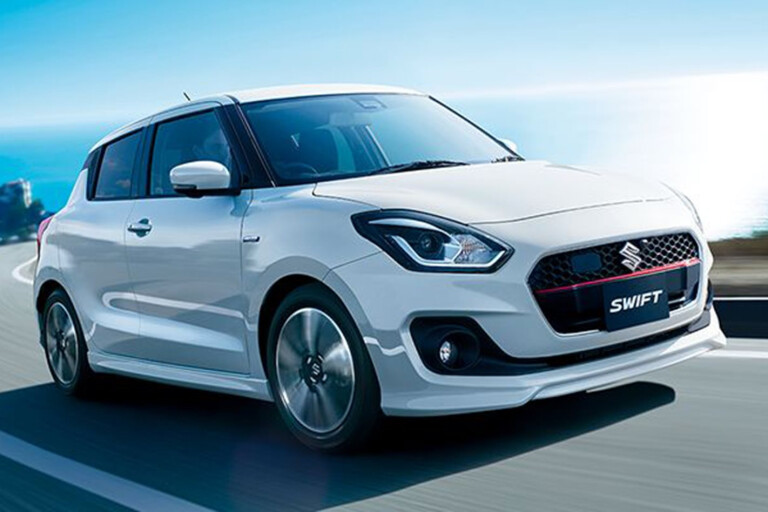
In spite of its age, the humble Suzuki Swift remains a key player in the light hatch segment, and one of the core pillars of Suzuki’s local lineup.
Over eight thousand new Swifts found homes in 2016, putting Suzuki’s stalwart hatch in a comfortable fourth place within its segment and earning it top-seller status in Suzuki’s Australian showrooms. Its importance to Suzuki is huge.
Which is why the impending arrival of its all-new replacement is big news. The third-generation Swift (fourth generation, if you count the last Suzuki Ignis that was sold overseas as a Swift) went on sale in its home market of Japan last week, debuting an all-new platform and, for the first time, a range of turbocharged and mild hybrid powertrains.

Built atop Suzuki’s stiffer and lightweight “Heartect” architecture, the 2017 Suzuki Swift also promises to pack more technology.
Alongside improvements to infotainment equipment, the new Swift is also offered in Japan with an autonomous emergency braking system, lane-departure warning, adaptive cruise control and high-beam assist, all of which use an integrated camera and laser sensor to detect objects in front of the car.

LED headlamps are also available, with integrated LED daytime running lamps.
The technology story continues under the bonnet. Alongside the 1.2-litre “DualJet” port and direct-injected engine that carries over from the existing model (albeit with tweaks to improve fuel economy and torque), Japanese Swift buyers can also opt for the turbocharged 1.0-litre BoosterJet engine.
The latter is similar to the 1.0-litre three-pot employed by the Suzuki Baleno GLX Turbo, but in Japanese trim produces 7kW and 10Nm less for a total of 75kW of power and 150Nm of torque. A six-speed automatic is the only transmission available for that engine.

1.2-litre models generate 67kW and 118Nm, and can be paired with a five-speed manual or CVT automatic. An AWD drivetrain is also available for the 1.2, albeit only with the CVT. The “hybrid“ makes identical power and torque figures and is CVT-only, but achieves lower fuel consumption thanks to engine start-stop.
In Japan, RS and turbocharged RSt specifications receive a firmer suspension setup designed to emulate European rivals – though a performance-focused successor to the Swift Sport has yet to be announced.

Meanwhile, door apertures have been enlarged to help passengers enter and exit, while the loading lip for the hatch has been brought 80mm lower to make it easier to pack the boot. A 20mm wheelbase stretch liberates more legroom for passengers and the boot measures in at 265 litres, 55 litres bigger than the current model.
Styling builds on the familiar lines of the current model, but sands down the edges in favour of more organic sheetmetal surfacing.
Blacked-out A- and B-pillars remain, though a new C-pillar graphic gives the roof a floating effect. In Japan, the RS-badged variants receive a bodykit and red trim accents to impart a sportier style.

Inside, Suzuki has aimed the Swift in a more upmarket direction. Clear dials, a large touchscreen infotainment display and a premium-looking steering wheel are design highlights, while climate control is available.
Though already on sale in Japan, the international-market Suzuki Swift will have to wait until March to make its debut at the Geneva Motor Show. A local on-sale date is tipped for the second quarter of this year.
COMMENTS